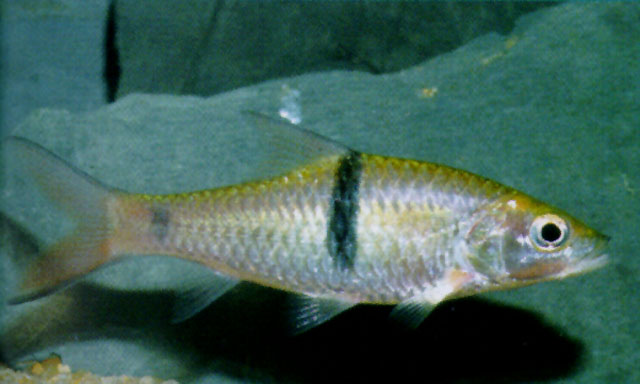| Cyprinidae (Minnows or carps), subfamily: Smiliogastrinae |
| 70 cm SL (male/unsexed) |
|
benthopelagic; freshwater, potamodromous |
| Asia: Mekong and Chao Phraya basins, Malay Peninsula and Indonesia. |
|
Dorsal soft rays (total): 11-11; Anal soft rays: 8-8. Has a black bar between the dorsal and pelvic fins in adults; orange to red caudal fin with a black longitudinal, marginal stripe along each lobe; juveniles usually with an additional vertical bar on the caudal peduncle (Ref. 27732); juveniles with black teardrop-shaped marking on cheek; barbel always longer than eye width (Ref. 12693). Eyes located in upper-side of head; with a vertical groove reaching behind mouth in isthmus; branchial membranes connected and free (Ref. 45536). |
| Occurs mainly in clear rivers or streams with running water and sandy to muddy bottoms (Ref. 4832). Found in most water bodies, except small creeks, torrents, and shallow swamps (Ref. 27732, 57235). A migratory species (Ref. 37772). Enters flooded forest (Ref. 9497). Abundant in the Mekong and in the Nam Ngum Reservoir. Found in the basin-wide tributary of the lower Mekong (Ref. 36667). Largest individual believed to be in a pool below the Chendoroh Dam in Perah, Malaysia. A predatory fish: adults mainly piscivorous in Zoo Negara Lake, Malaysia, but in Saguling Reservoir, West Java, 74 % of the diet consists of aquatic insects. Breeds throughout the rainy season (Ref. 12693). Good fish though bony. May be made into `Lap pa'. Marketed fresh (Ref. 12693). Commonly seen in markets; economic important foodfish (Ref. 57235). |
|
Least Concern (LC); Date assessed: 01 February 2019 Ref. (130435)
|
| harmless |
Source and more info: www.fishbase.org. For personal, classroom, and other internal use only. Not for publication.
